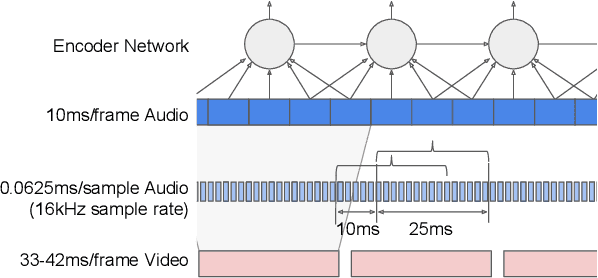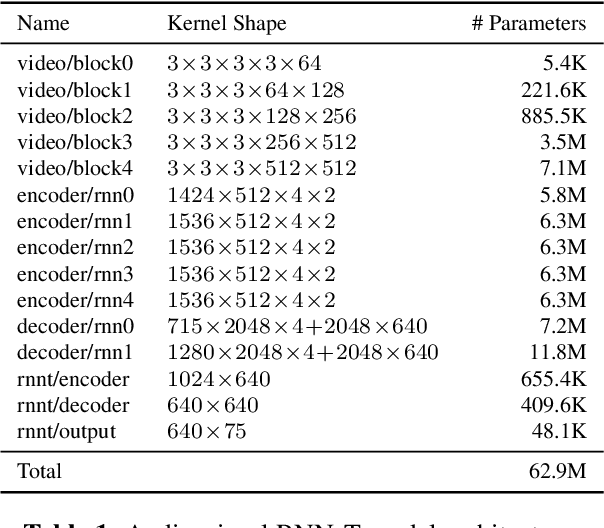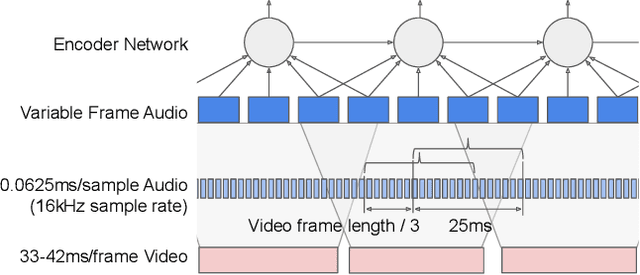Recurrent Neural Network Transducer for Audio-Visual Speech Recognition
Paper and Code
Nov 08, 2019



This work presents a large-scale audio-visual speech recognition system based on a recurrent neural network transducer (RNN-T) architecture. To support the development of such a system, we built a large audio-visual (A/V) dataset of segmented utterances extracted from YouTube public videos, leading to 31k hours of audio-visual training content. The performance of an audio-only, visual-only, and audio-visual system are compared on two large-vocabulary test sets: a set of utterance segments from public YouTube videos called YTDEV18 and the publicly available LRS3-TED set. To highlight the contribution of the visual modality, we also evaluated the performance of our system on the YTDEV18 set artificially corrupted with background noise and overlapping speech. To the best of our knowledge, our system significantly improves the state-of-the-art on the LRS3-TED set.
 Add to Chrome
Add to Chrome Add to Firefox
Add to Firefox Add to Edge
Add to Edge